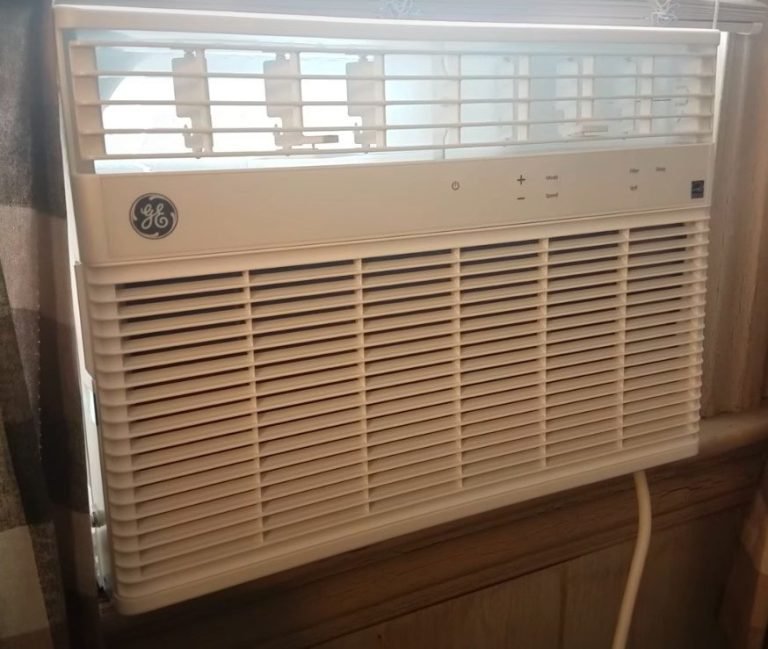
You might be wondering, “Why does this happen?” Well, it could be due to several things. Perhaps there’s a clog somewhere, like a little blockage in a straw. Or maybe the unit was just overworked during a scorching summer day, and it needs a break. The key is to figure out if a reset will actually fix the problem or if something more is needed. So, let’s dive into understanding what the “OE” error really means and whether hitting that reset button is the answer to your woes.
Understanding the OE Error Code
Before we jump to solutions, it’s crucial to really understand what the OE error code is all about. In simple terms, this code is a signal from your GE air conditioner that it’s having trouble with draining water. You see, air conditioners don’t just cool down air—they also pull moisture out of it, which needs to go somewhere. Normally, it gets drained away smoothly, but when the OE error pops up, it’s like your air conditioner is waving a little white flag, saying, “Help! I’m having trouble getting rid of the water!”
Now, why might it struggle with this drainage? Imagine pouring a drink through a funnel; if you pour too fast or the spout is blocked, the liquid backs up. Similarly, if there’s dirt or debris clogging the drainage system of your AC unit, the water can’t flow out properly. Alternatively, the problem could be more internal, like a failing pump that’s not pushing water out efficiently. Either way, the result is the same: your air conditioner is struggling to do its job, and it’s letting you know.
So is a reset the magic fix? Not always, but it’s often a good place to start. Sometimes the system just gets a little overwhelmed or confused, and a reset helps it “reboot” to normal operations. However, if the underlying issue—like a clog or broken pump—remains, the error may persist. That’s why understanding the root cause and knowing a bit more about your air conditioner’s workings can be really beneficial.
Steps to Reset Your GE Air Conditioner
If you’ve ever had to troubleshoot a simple gadget, you know that resetting is often the first step. It’s like hitting the refresh button on your browser when a webpage won’t load. Resetting your GE air conditioner is a straightforward process but doing it correctly is key to getting things back on track.
First things first, you need to turn off the unit. Find the power button on your remote or the main unit and switch it off. Next, unplug the unit from the electrical outlet. You see, this completely cuts power to the system, ensuring that the reset is as thorough as possible. Leave it unplugged for a few minutes—around five minutes should do the trick. This gives the unit some downtime to cool off and essentially “forget” whatever glitch caused the error.
After your brief wait, plug the unit back in and power it on. Cross your fingers and check to see if the error code has disappeared from the display. If it has, great! Your system is likely back to normal. But if it’s still showing, don’t worry; there are more steps we can take to figure out what’s going on.
What If Resetting Doesn’t Work?
So, you’ve given resetting a shot, and that stubborn OE error is still staring you down. Don’t lose hope just yet. Think of it like trying to start a car that won’t ignite on the first try. There could be more under the hood that needs checking. In this case, we need to dig into some possible underlying issues.
One common culprit is a clogged drain line. Just like when food bits block your sink, grime and dust can accumulate in your AC’s drainage system. To address this, you might need to detach the drainage line and give it a good clean. If this sounds daunting, remember, calling a professional is always a solid option. They can provide a thorough cleaning and ensure everything is in tip-top shape.
But what if the drain line isn’t the issue? You could be looking at a malfunctioning pump. A pump that’s not working properly can impede water from being expelled efficiently. It’s like a heart that’s struggling to pump blood—everything backs up. If you suspect this might be the case, checking for any strange noises or leaks around the unit might give you additional clues. Again, don’t shy away from seeking expert help.
Preventing the OE Error in the Future
So, you’ve dealt with the error code and your air conditioner is back to cooling your room like a dream. That’s awesome! But how do you keep this pesky OE error from reappearing? Prevention is the name of the game here, and a little regular upkeep can go a long way.
One of the simplest things you can do is to keep an eye on the cleanliness of your unit. Make sure filters are clean and free of dust, as this helps the whole system run more smoothly. Just like how brushing your teeth prevents cavities, regular cleaning prevents clogs. Also, consider setting a schedule to check the drainage periodically. It doesn’t have to be often, but even once every season can help stop problems before they start.
Another pro tip is to ensure your air conditioner is installed correctly. This ensures that condensation flows out as intended and doesn’t pool inside the unit. Proper installation is like setting the foundation for a sturdy house—it makes everything else much more reliable.
By following these preventative steps, not only do you reduce the chance of seeing that frustrating OE code again, but you also extend the life of your air conditioner overall. So keep cool, and stay proactive!